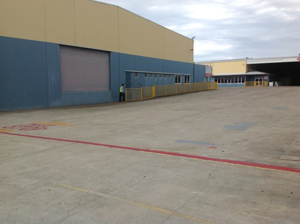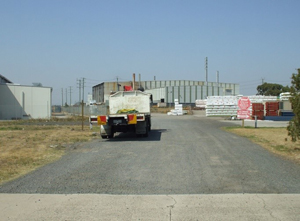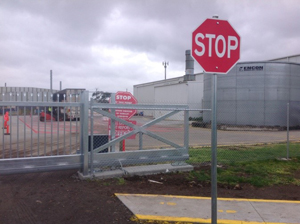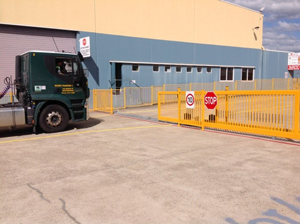Onsite traffic management case study: Hyne Timber
Hyne Timber is the largest privately owned and operated timber manufacturing company in Australia, operating from 11 sites throughout eastern Australia.
What was the problem?
At Hyne Timber's sales and distribution facilities heavy vehicles, mobile plant, trucks, and pedestrians interact with each other on a regular basis. The company identified that there were safety hazards associated with this interaction.
Hyne Timber reviewed its on-site traffic management work health and safety systems and practices and identified that there were inadequate control measures in place.
Issues included:
- unrestricted pedestrian and vehicle access to the site with hinged manually operated vehicle gates left open during business hours
- unsuitable driver safety zone (DSZ) locations
- insufficient radio communications, with no two-way radio in DSZ
- unrestricted access for personnel and visitors into high risk areas, such as warehouse storage and vehicle loading zones
- unsuitable traffic flows accessing or exiting the site and inconsistent application of existing traffic flow protocols
- limited supervision of truck drivers to ensure site safety rules in loading areas were followed.
What were the solutions?
Hyne Timber implemented new control measures to reduce on-site traffic management risks.
- A standardised approach to traffic management was implemented across all areas of operation, which required additional procedures and specifications to be developed.
- Mobile plant and work activities (warehouse operations and vehicle loading) were separated from personnel by installing clearly marked walkways, fencing and pedestrian access gates.
- Electric, remote controlled gates were installed with auto close mechanisms that allow for more robust control of trucks and couriers entering the sites.
 Before – open access |
After – controlled access |
 Before - open access to the site |  After – controlled access slide gate |
- Web interface cameras with digital recording were installed throughout the loading areas allowing monitoring of all activities.
- Separate pedestrian and vehicle access gates were installed.
- Radio coverage was also implemented across sites for all mobile plant and select personnel (such as truck drivers in the DSZ), removing the need for them to enter the loading area.
- Car parking was separated from loading and unloading activities.
What were some of the benefits?
- More efficient movement of vehicles and people around the warehousing and loading areas resulting in faster delivery and pick up times.
- More effective stock layout, which has helped boost productivity and reduce loading and unloading times.
More information
For more information and resources to improve your businesses work health and safety visit worksafe.qld.gov.au or call 1300 362 128.
